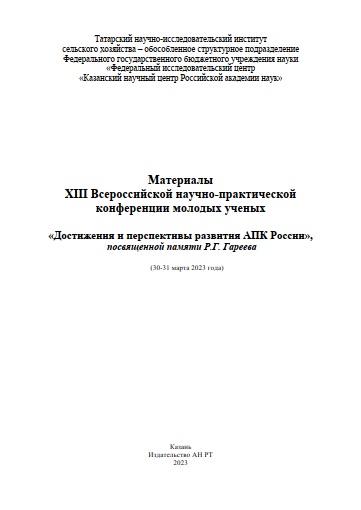Snow mold is one of the most harmful diseases affecting winter crops. It significantly reduces yields and also worsens the quality of grain. This article presents the results of assessing the impact of snow mold on varieties of winter rye and winter triticale against a natural and artificial background of disease development. The differences in the resistance of the gene pools of the compared crops are shown, and the varieties that are most resistant to Microdochium nivale are identified.
Snow mold, Microdochium nivale, winter rye, winter triticale, resistance, susceptibility
1. Tkachenko O.B. Snezhnye pleseni, istoriya izucheniya, vozbuditeli, ih biologicheskie osobennosti. Moskva: Rossiyskaya akad. nauk. - 2017.
2. Ponomareva M.L., Ponomarev S.N., Mannapova G.S., Ilalova L.V. Fitosanitarnyy monitoring naibolee vredonosnyh bolezney ozimoy rzhi v Respublike Tatarstan // Vestnik Krasnoyarskogo gosudarstvennogo agrarnogo universiteta. 2019. №. 9 (150). S. 27-34
3. Gagkaeva T.Y., Orina, A.S., Gavrilova, O.P., & Gogina, N. N. Evidence of Microdochium fungi associated with cereal grains in Russia // Microorganisms. 2020. T. 8. №. 3. S. 340.
4. Ponomareva M.L., Gorshkov, V.Y., Ponomarev, S.N., Korzun, V., & Miedaner, T. Snow mold of winter cereals: A complex disease and a challenge for resistance breeding // Theoretical and Ap plied Genetics. 2021. T. 134. №. 2. S. 419-433.





